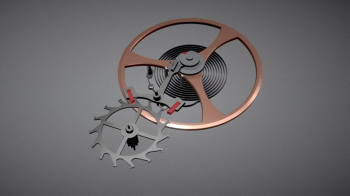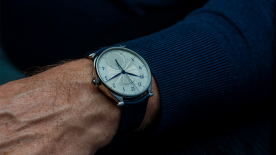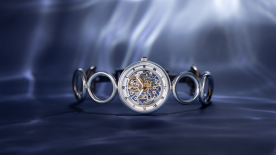The fundamental purpose of a watch is to keep good time. If your watch doesn’t do that, I’m sorry to inform you that you don’t have a watch, you have an unjustifiably expensive decorative wrist thing. By extrapolation, the most important component in any wristwatch, the thing that determines your watch’s existential status, is the regulator, also known as the regulating organ.
If you’re anything less than a hardcore watch geek, the term “regulating organ” isn’t going to mean much to you. Out of context, it sounds vaguely anatomical, like something delicate and troublesome that you wouldn’t want to discuss with your mother.
(Come to think of it, the horological regulating organ is in fact something delicate and troublesome that I have never wanted to discuss with my mother. But that is beside the point.)
When broken down, the term “regulating organ” of a watch is pretty much what it says it is. It is an organ — that is, a system of parts working together — that controls (ie, regulates) the mechanical operation of a watch movement, thereby allowing it to measure time.
You’ll hear “regulator” used interchangeably with “regulating organ”, and whilst I appreciate the brevity of the former term, the latter offers better semantic precision. This is because “regulator” can also refer to a style of timepiece characterised by separate displays of the hours, minutes and seconds. Despite the double meaning, it’s not really that confusing; you can usually figure out if the subject of discussion is a watch or a watch part, but I think it’s just easier to avoid the ambiguity altogether.
In mechanical clockmaking and watchmaking, the regulating organ is composed of the following: an oscillator and an escapement.
When supplied with energy, the oscillator is able to move rhythmically in alternating directions, taking equal time in either direction (like a metronome). This provides us with an indication of a series of regular time units. The oscillator can be adjusted so that its period of oscillation is in convenient divisions of a second, making it easier for us to derive time readings from it.
In order to keep the oscillator going continuously, an escapement is needed to supply it with energy. The escapement also makes it possible for time to be displayed on a timepiece. We’ll go into more detail about how the oscillator and escapement work in the following chapters, the next of which is appearing next week, so stay tuned.




